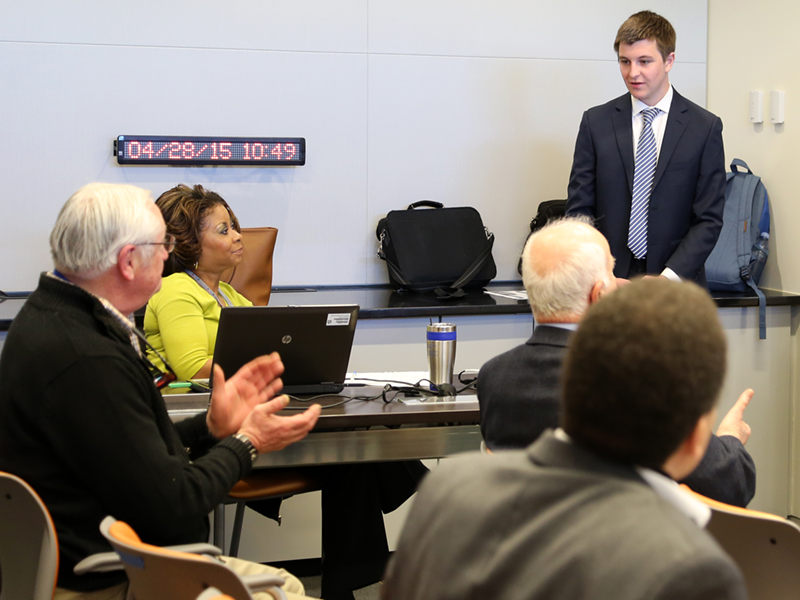
Innovation-led development is a crucial driver of economic growth, high-quality jobs, and rising standards of living. To succeed, a high-functioning innovation ecosystem must translate R&D activities into products and move technology commercialization into high-growth businesses. It is well known that federal labs play a key role in discovering and developing new ideas and new technologies; innovations that enable scientific advancements and impact the economy. For example, NASA’s patent portfolio includes over 1200 inventions available for commercial use. It is also evident that translating such research from concept to commercialization is non-trivial. Cooperation between government support for research and private-sector investment in transforming leading-edge discoveries into new commercial products continues to be vital to economic growth and innovation-led success. The challenging nature of this effort raises questions to be answered.
- How can the transfer and commercialization of federal research be accelerated, and the market entry rate be increased?
- How can federal labs and external entities leverage each other to move technologies along the commercialization continuum, increasing the probability for successful market entry and job creation?
- How can federal labs simultaneously generate and support external commercialization pipelines that will collaborate to accomplish future mission objectives?
- How can federal labs and the private sector collaborate to reduce risk and increase investment readiness?
The answers to these questions are multi-faceted and lie within the following.
- Organizational culture
- Interpretation of regulatory policy
- Innovation/entrepreneurial ecosystem connectivity and engagement
- Solid understanding of problems to be solved and the commercialization process
- Federal, state, and local government investment in product development and startup generation
- Language gaps and barriers between government and entrepreneurial and investment communities
While working in government economic impact programs and partnership with external innovation and investment communities, a few key findings that led to these answers were realized. Scientists and engineers generate many patents while on the path toward accomplishing mission objectives; however, most patent generation does not typically begin with external problems in mind. Technology development is to a Technology Readiness Level (TRL) applicable to agency mission objectives; however that TRL is not the same as the TRL of the technology once it is transferred to industry. Organizational maturity significantly influences the success of product development and market entry probability. The success (or failure) after facilitating a technology deal depends partly on the company’s product development capabilities, competencies, and assets. Technology transfer and technology commercialization are not the same, and this journey from idea to impact is challenging. A coordinated and connected seamless lab-to-market support and funding ecosystem is critical to accelerating the commercialization of research from federal labs. And, within this support ecosystem, shared interpretation of the regulatory policy is necessary for unification across the federal government. Cultural adaptation to new approaches for commercialization, process improvement, reduction in knowledge gaps and barriers to innovation commercialization, market-pull vs. technology-push strategies, and non-traditional engagement efforts for ecosystem immersion will enable a more successful commercialization operating model for federal labs.
NASA is leading the way to address these challenges and shift organizational culture. Advocacy for entrepreneurship and novel approaches to external engagement at NASA was demonstrated by creating the Technology Transfer Expansion (T2X) program. With a vision for NASA-infused tech startup ecosystems across the U.S., T2X accelerates the commercialization of NASA innovations through partnerships and pipeline development, entrepreneurial workforce training, and engagement efforts within communities of future founders. The program works toward creating a culture of innovation through entrepreneurial workforce training, enabling the closure of knowledge gaps, and providing an opportunity for its workforce to understand potential applications of their innovations better. Thinking like an entrepreneur doesn’t have to mean starting a business; idea generation, design thinking, learning to listen, iterate, pivot, and communication and presentation skills are all necessary competencies in a diverse portfolio of research areas.
Synonymous to shifting perspective through employee training, T2X engages a different approach to understanding how value can be delivered within communities. The team adopts a market-pull strategy to identify engagement opportunities and potential collaborators. By listening first, we can then identify value alignment and increase chances for productive activities that contribute to the achievement of the mission. To do this requires sufficient investment in time and may not see immediate results. However, I believe that relationship development doesn’t happen overnight; it is a continuous process with long-term (cost-saving) benefits. T2X expands its influence into entrepreneurial communities, reaching aspiring founders, mentors, investors, and economic impact leaders to accelerate the development of commercialization pipelines for startup support. By immersing ourselves in innovation communities and simultaneously educating our workforce, NASA is making strides in the right direction. These steps begin to shift organizational culture and enable partnership development to help create the products of tomorrow, thereby benefiting society at large.
Novel approaches to commercialization and ecosystem engagement are being implemented across the government, and the outlook for impactful results is promising. Federal lab innovations can change the world through the hands of visionaries and pioneers. I look forward to what the future trendsetters will create tomorrow.



